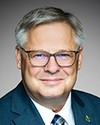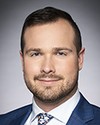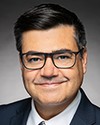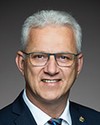Thank you, Madam Chair and members of the committee. It's a pleasure to once again appear before the House of Commons Standing Committee on Science and Research.
I would like to begin by acknowledging that our operations at CNL take place on the unceded and unsurrendered traditional territories of numerous first nations across Canada. At CNL, we recognize the unique history, spiritual beliefs, cultural practices and languages of indigenous people in Canada. We appreciate the responsibility that they have as stewards of the environment.
My remarks today seek to inform the committee's study of international moon shot programs. The topic that I want to discuss is radiopharmacy or radioisotopes.
As Canada's national nuclear laboratory, CNL and our predecessor, AECL, have a deep and profound history of innovation. The first nuclear reaction outside of the United States took place at Chalk River Laboratories in 1946. At one time, we were home to the most powerful research reactor in the world. That period was marked by ambition, and that pioneering work produced groundbreaking feats of engineering, leading to the dawn of an industry that today employs over 76,000 people, to the construction of Canadian-made nuclear reactors around the world and to the delivery of over one billion treatments in the fight against cancer.
What brought the United States to the moon is the same spirit that led us to explore the mysteries of the atom. It was national ambition, aggressive research and development, bold leadership and, perhaps most of all, a real sense of urgency and the competitive instinct that says “we must be first”. When it comes to the research, production and processing of medical isotopes, we, for many decades, have led the way in Canada.
I do not think I am breaking any news to this committee when I say that over the years, that sense of urgency and purpose began to wane at Chalk River Laboratories. It wasn't until 2014, when we were given a new lease on life by the Government of Canada, that our scientists were once again able to aim higher and to think bigger. We asked ourselves this: What are we good at and what will improve the lives of everyday Canadians? What will put us on the map again as a company that can change the world? What is our moon shot?
Today, I am proud to say that CNL intends to win the global race to produce the rarest isotope on earth, a compound known as actinium-225. Simply put, we intend to help cure cancer.
It will come as no surprise to me if you have never heard of actinium-225. The isotope is so rare that the annual global production is less than a grain of sand. However, its unique properties have also made it one of the most sought-after isotopes in the world, and at CNL, we recognized that we were one of the few companies that could produce it.
Over the past three years, we have developed a small-scale generator that produces meaningful quantities of actinium for our studies and for our strategic partners, but we have bigger ambitions. We see an opportunity to build on our legacy in isotope production and processing, and we are now pursuing the construction of new facilities on or near our Chalk River campus that would establish a stable commercial supply for this valuable isotope. In fact, we have already signed a memorandum of understanding with a leading German biotech company as part of that effort.
I want to be clear. This is an enormous undertaking, and it will not be easy. It means that we must raise hundreds of millions of dollars. It requires a deep network of partners and suppliers, and to be frank, it comes with risk. One of our competitors, TerraPower, is backed by Bill Gates.
As every Canadian knows, you miss 100% of the shots you don't take. If I had any advice for Canada, it would be to apply the same approach to innovation on a larger national scale. It would be to leverage the strategic resources we have in this country, including our vast national laboratory network, and use them collectively to focus on big and bold issues of national importance, to once again pursue projects that seem to be out of reach to us, to focus on what we do well as a nation and to unleash the scientific visionaries we have in this country. It means making tough decisions and leaving some projects behind, and it comes with risk, both political and financial. Most of all, it requires urgency.
Thank you once again for the opportunity to be here today. I'll be happy to answer any of your questions.
Thank you, Madam Chair.










